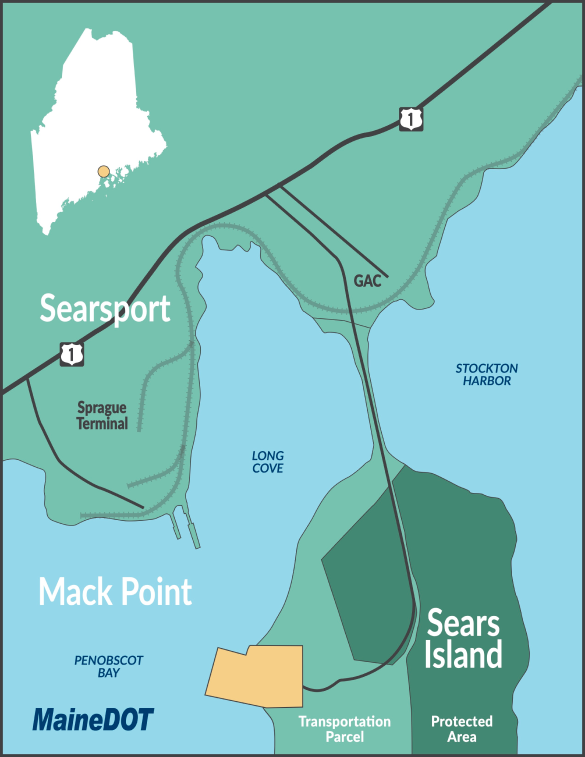Maine's Offshore Wind Port
An offshore wind port facility is essential for unlocking Maine’s potential to create good-paying jobs, broad economic development, and generate clean electricity to stabilize energy costs and reduce reliance on fossil fuels. Based on feasibility studies conducted by the Maine Department of Transportation (MDOT), stakeholder input, and several environmental studies, Maine is advancing plans for a purpose-built facility in Searsport at Sears Island for floating offshore wind fabrication, staging, assembly, maintenance, and deployment.


The State of Maine has selected a site in the Port of Searsport, highlighted here in yellow, for a purpose-built facility for floating offshore wind fabrication, staging, assembly, maintenance, and deployment. With deepwater access to the port development site, Maine has the potential to establish a premier location for the industry and help meet growing demand in the U.S. for offshore wind port infrastructure.
Sears Island is a 941-acre island off the coast of Searsport, an active seaport since the 1700s and among the most versatile port sites on the East Coast.
The site selected by the State is expected to be about 100 acres in size. Sears Island is divided into two parcels: approximately two-thirds of the island is under a permanent conservation easement, while the remaining one-third is reserved by MaineDOT for future development.
The Maine Offshore Wind Roadmap determined a port facility is a priority for unlocking Maine’s opportunity in offshore wind. MaineDOT, on behalf of the State, intends to apply for permits for the port project beginning in 2024. Learn more about the State’s offshore wind port plans here.